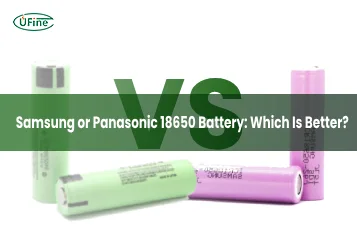High-voltage batteries are a cornerstone of modern technology, powering everything from electric vehicles (EVs) to renewable energy storage systems. This guide provides an in-depth understanding of high-voltage batteries, covering their applications, advantages, types, and maintenance. Let’s dive into the world of high-voltage batteries and explore their significance in today’s technological landscape.
Part 1. What are high-voltage batteries?
A high voltage battery is defined as a rechargeable energy storage system operating above 48V, typically ranging from 100V to 800V in modern applications. These batteries power demanding technologies like electric vehicles and grid storage, where high energy density and rapid power delivery are critical. Unlike standard 12V automotive batteries, high voltage systems use multiple cells connected in series to achieve operational voltages 4-65x higher.
Advantages of high voltage batteries
High-voltage batteries offer several benefits:
- Higher Energy Density: They can store more energy per unit volume, making them ideal for applications requiring compact and efficient power sources.
- Enhanced Efficiency: These batteries can charge and discharge at higher rates, improving overall efficiency and lifespan.
- Greater Power Output: They deliver higher power output, which benefits applications needing quick bursts of energy, such as EV acceleration.
- Longer Lifespan: High-voltage batteries generally have a longer lifespan than conventional batteries, making them a cost-effective solution in the long run.
Disadvantages of high voltage batteries
Despite their advantages, high-voltage batteries also have some drawbacks:
- Complexity and Cost: These batteries’ advanced technology and materials make them more expensive and complex.
- Compatibility Issues: Not all devices can handle the high power output of these batteries, which limits their use in specific applications.
- Safety Concerns: High voltage systems require stringent safety measures to prevent accidents, such as overcharging or thermal runaway.
Part 2. How do high-voltage batteries work?
High-voltage batteries are crucial in many devices, from electric vehicles to power tools. Here’s how they work:
- Basic Principle: High-voltage batteries store electrical energy. This energy comes from chemical reactions inside the battery. When you connect the battery to a device, these reactions release energy.
- Chemical Reactions: Inside the battery, there are chemicals called electrodes. One electrode is positive (cathode), and the other is negative (anode). The chemical reactions between these electrodes generate electricity.
- Electrolyte: The electrolyte is a substance that helps move electrical charges between the electrodes. It’s usually a liquid or gel. The electrolyte allows the flow of ions, which is essential for generating power.
- Voltage: Voltage is the measure of electrical force. High-voltage batteries have higher voltage than standard batteries, which means they can provide more power to devices. The voltage is determined by the battery’s type and number of cells.
- Battery Cells: A high-voltage battery consists of multiple cells connected in series. Each cell generates a small amount of voltage, and the total voltage increases by linking them. For example, three 3.7V cells in a series create an 11.1V battery.
- Power Delivery: The stored energy flows through the device’s circuit when the battery is used. This flow of energy powers the device. The efficiency of power delivery depends on the battery’s design and quality.
- Safety Mechanisms: High voltage batteries often have safety features. These include protection circuits to prevent overcharging or overheating. These features help avoid potential hazards and extend the battery’s life.
Part 3. Types of high voltage batteries
Lithium Ion Batteries (Li-ion)
- Voltage Range: 3.6V-3.8V per cell, systems up to 800V
- Energy Density: 250-300 Wh/kg
- Cycle Life: 500-1500 cycles
Lithium-ion batteries are widely used due to their high energy density and lightweight design. They are commonly found in smartphones, laptops, and electric vehicles. These batteries can store a lot of energy in a compact size, which makes them ideal for portable electronics. However, they can be expensive and may overheat if not properly managed.
Lithium Iron Phosphate Batteries (LiFePO4)
- Voltage Range: 3.2V-3.3V per cell, systems up to 1500V
- Energy Density: 90-160 Wh/kg
- Cycle Life: 2000-7000 cycles
Lithium Iron Phosphate batteries are known for their safety and long lifespan. They are commonly used in electric vehicles and solar energy storage systems. These batteries have a stable chemistry, making them less likely to overheat and safer than lithium-based batteries. They have a lower energy density but are more durable and reliable.
Nickel-Cobalt-Manganese (NCM) Batteries
- Voltage Range: 3.6V-3.7V per cell, systems up to 800V
- Energy Density: 150-220 Wh/kg
- Cycle Life: 1000-2000 cycles
NCM batteries are famous for their high energy density and balanced performance. They are often used in electric vehicles and high-performance applications. These batteries offer a good mix of energy capacity, safety, and cost. Their higher energy density compared to other battery types helps extend the range of electric vehicles.
Nickel-Cobalt-Aluminum (NCA) Batteries
NCA batteries are known for their high energy density and power output. They are used in some electric vehicles and advanced electronics. These batteries offer excellent performance with high capacity and longer lifespan. They are more expensive and require careful handling to ensure safety.
Solid-State Batteries
- Voltage Range: 3.8V-4.5V per cell (expected)
- Energy Density: 300-400 Wh/kg (expected)
- Key Advantage: 40% faster charging with near-zero fire risk
Solid-state batteries use a solid electrolyte instead of a liquid or gel. They are emerging technologies with higher energy density and safety than traditional batteries. These batteries are still in development but promise better performance and protection with a reduced risk of leaks and fires.
High Voltage Battery Technical Comparison
| Battery Type | Voltage per Cell | Energy Density | Cycle Life | Cost per kWh | Best For |
|---|---|---|---|---|---|
| Li-ion | 3.6-3.8V | 250-300 Wh/kg | 500-1500 | $120-$150 | EVs, Consumer Electronics |
| LiFePO4 | 3.2-3.3V | 90-160 Wh/kg | 2000-7000 | $90-$130 | Solar Storage, Industrial |
| NCM | 3.6-3.7V | 150-220 Wh/kg | 1000-2000 | $110-$140 | EVs, Power Tools |
| Solid-State | 3.8-4.5V* | 300-400 Wh/kg* | 1000+* | $200+* | Next-Gen EVs |
*Estimated values based on industry prototypes
Part 4. Applications of high-voltage batteries
High-voltage batteries are versatile and find applications across various industries:
- Electric Vehicles (EVs): These batteries power the electric motors in EVs, providing the energy needed for propulsion and ensuring a range comparable to traditional fuel-powered vehicles.
- Renewable Energy Storage: High voltage batteries store excess energy generated from renewable sources like solar panels, making them available during periods of low production or high demand.
- Uninterruptible Power Supply (UPS): In critical settings such as hospitals and data centers, high-voltage batteries provide backup power during outages, ensuring continuous operation.
- Aerospace and Defense: These batteries power systems in satellites, uncrewed aerial vehicles (UAVs), and military vehicles, where high energy density and power output are crucial.
High Voltage Battery vs Low Voltage Battery: Which is Better for You?
Real-World High Voltage Battery Applications
- Tesla Model S Plaid: 450V lithium-ion battery delivering 1,020 hp acceleration
- Porsche Taycan: First production EV with 800V architecture (270kW charging)
- California Solar Farm: 1500V LiFePO4 system storing 2.4GWh for grid stabilization
- Boeing 787 Dreamliner: 32V lithium batteries converted to 115V AC for auxiliary power
Part 5. Factors to consider when choosing a high-voltage battery
Selecting the correct high-voltage battery involves considering several factors:
- Energy and Power Requirements: Determine the application’s energy and power needs to ensure the chosen battery can meet those demands.
- Battery Capacity: Consider the required runtime and determine the optimal capacity to meet specific needs.
- Voltage Level: Assess the application’s voltage requirements and choose a battery within the desired range.
- Lifespan: Evaluate the expected lifespan and select a battery with suitable longevity.
- Safety Features: Look for batteries with built-in safety features such as overcharge protection, discharge protection, and temperature monitoring.
- Cost: Consider the cost-effectiveness, including initial cost, maintenance requirements, and overall lifespan.
Part 6. High voltage battery maintenance: 6 Essential steps
- Follow Charging Protocols: Use only manufacturer-approved chargers; maintain 20-80% charge for daily use
- Monitor Temperature: Keep batteries at 15-35°C; install thermal sensors for >400V systems
- Monthly Voltage Checks: Measure cell variance – >0.1V difference indicates balance issues
- Terminal Maintenance: Clean terminals quarterly with dielectric grease to prevent corrosion
- Storage Preparation: Store at 40% charge in climate-controlled (10-25°C) environments
- Disposal Compliance: Follow local regulations – all Li-ion batteries require special recycling
Part 7. Future trends in high voltage battery technology
Innovations driving the next-generation high voltage batteries:
- 800V Architecture Dominance: 30% of new EVs by 2025 (BloombergNEF) enabling 10-80% charges in 15 minutes
- Cell-to-Pack (CTP) Design: CATL’s Qilin battery increases energy density by 13% through module elimination
- Solid-State Commercialization: Toyota’s 2027 target for 750-mile range EVs with 10-minute charging
- Sodium-Ion Alternatives: 160V+ systems at 30% lower cost for stationary storage by 2025
- AI-Optimized BMS:Machine learning predicting battery health with 95% accuracy
Market projection: $150 billion by 2030 at 25% CAGR (Global Market Insights)
Part 8. FAQs about high voltage battery
What voltage defines a high voltage battery?
Industry standard: Batteries operating above 60V DC or 30V AC are classified as high voltage. Electric vehicles typically use 400V or 800V systems.
How long do EV high voltage batteries last?
Modern EV batteries retain >70% capacity after 8-10 years. Tesla Model 3 data shows 90% capacity retention after 200,000 miles with proper maintenance.
Are 800V batteries safer than 400V systems?
Safety depends on BMS design, not voltage alone. 800V systems use half the current, reducing heat generation by 75% during fast charging.
What’s the cost difference between high vs low voltage batteries?
| System Type | Cost per kWh | Installation Cost |
|---|---|---|
| 48V Low Voltage | $100-$130 | $500-$1,000 |
| 400V High Voltage | $120-$150 | $2,000-$4,000 |
| 800V High Voltage | $140-$170 | $3,500-$6,000 |
High voltage systems offer 30% lower energy loss during transmission.
Can I replace lead-acid with LiFePO4 high voltage batteries?
Yes, 48V/72V LiFePO4 systems directly replace lead-acid with 4x longer lifespan and 50% weight reduction. Requires compatible BMS and charger.
Related Tags:
More Articles

Panasonic 18650 and Samsung 18650 Battery: What is the Difference?
Compare Panasonic and Samsung 18650 batteries by capacity, discharge rate, cycle life, and performance. Find the right cell for your application.
Ultra-Thin Miniature Battery Solutions: Designing for the Slimmest Devices
Miniature batteries power ultra-slim devices like wearables and smart cards. Learn their types, uses, and role in thin electronic design.
Samsung 18650 Batteries Explained
Explore Samsung 18650 batteries, their models, performance specs, safety tips, and how to choose the right one for your device or project.
What Is a Miniature Battery? Definition, Types, and Key Characteristics
A miniature battery powers small devices like watches and hearing aids. Learn its types, how it works, and how to choose the right one.
Top Features of a Good 18650 Battery You Should Know
Learn what makes a good 18650 battery and how to choose the best one for your device. Includes safety tips, top brands, and usage recommendations.





